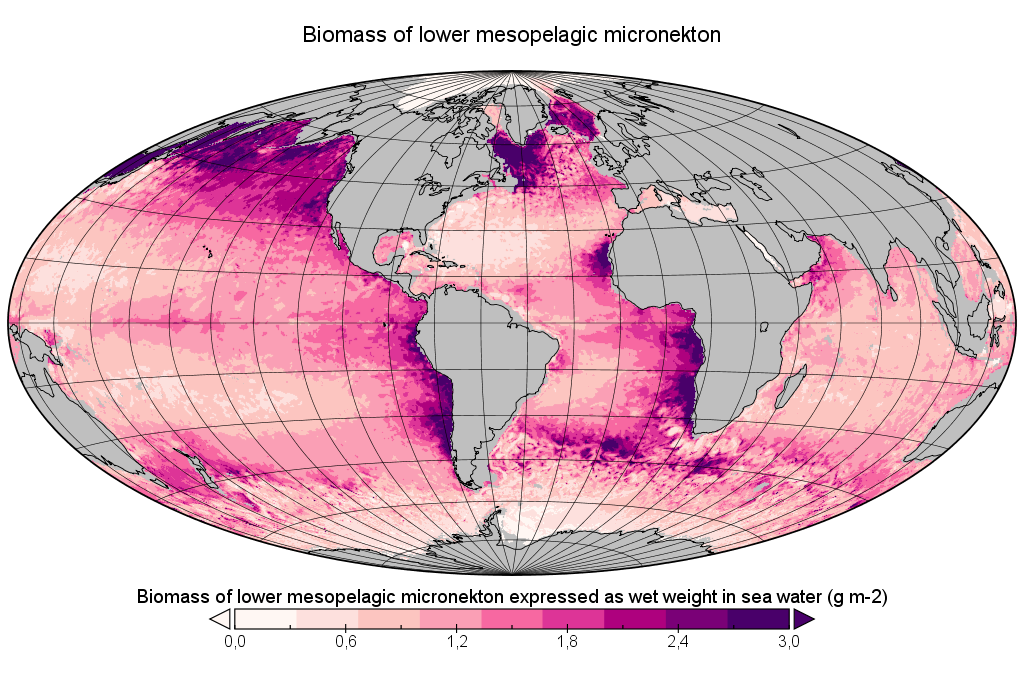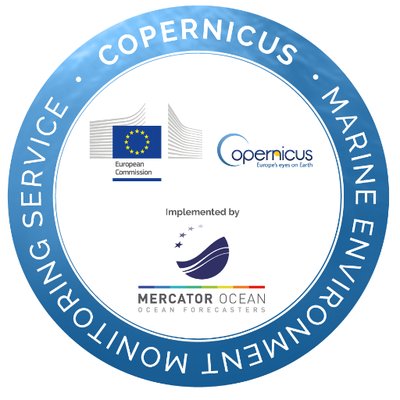

New Global Zooplankton and Micronekton Product Delivered for CMEMS
This month, the Seapodym team delivered a global zooplankton and micronekton model-based product to the Copernicus Marine Environment Monitoring Service. This product provides information to better monitor the green (biogeochemical) ocean. It has impacts for sustainable fisheries management and climate science.
What are zooplankton and micronekton?
They are small organisms at the low and mid-trophic levels of the ocean food chain. Zooplankton are organisms in the size range of less than 1 to a few millimeters (e.g., copepods) constituting prey of all fish larvae. Micronekton are also relatively small but actively swimming organisms such as crustaceans, fish, and cephalopods that are typically about 1 to 10 centimeters in size. Micronekton are prey of large fish and other oceanic predators (see example here). They are also predators of fish larvae. Therefore, zooplankton and micronekton distributions are key explanatory variables to understand individual behavior and population dynamics of larger oceanic predators that are either targeted by fisheries (mackerel, tuna, swordfish, etc.), strictly controlled in by-catch (e.g., bluefin tuna or sharks), or fully protected (marine turtles, seabirds, marine mammals).
Product Information
The low and mid-trophic levels (LMTL) reanalysis for the global ocean is produced by the Marine Ecosystem Modeling team in the Fisheries Division of CLS Group. It provides 2D fields of zooplankton biomass and six groups of micronekton biomass for the time period 1998-2016 at 1/4 degree and weekly time resolution. It uses the LMTL component of a dynamic population model.
